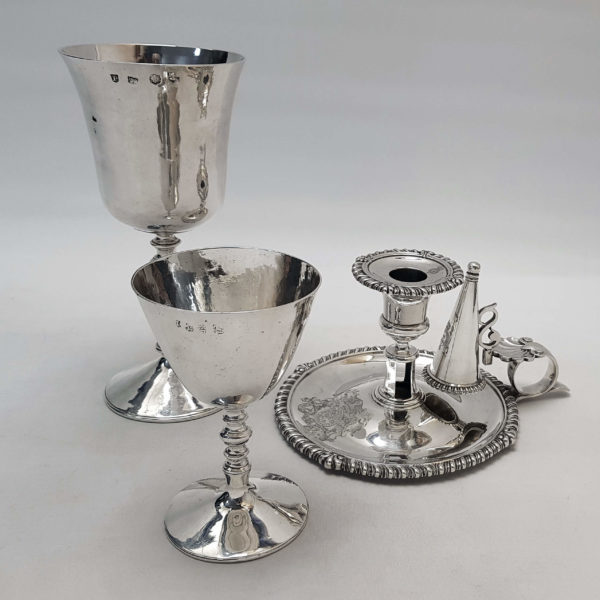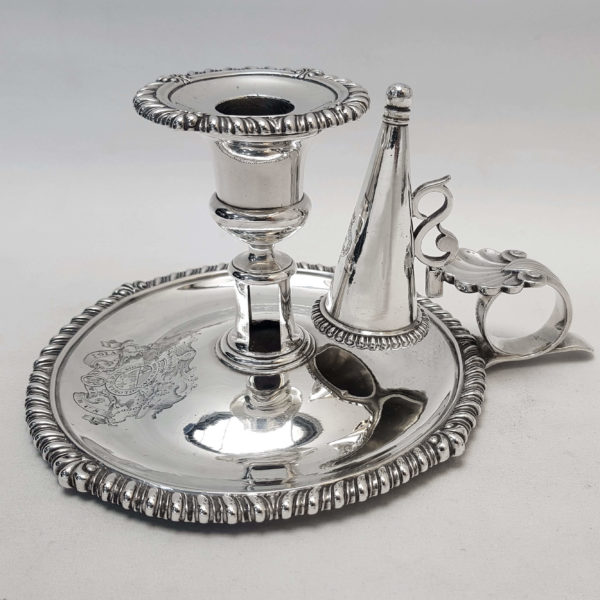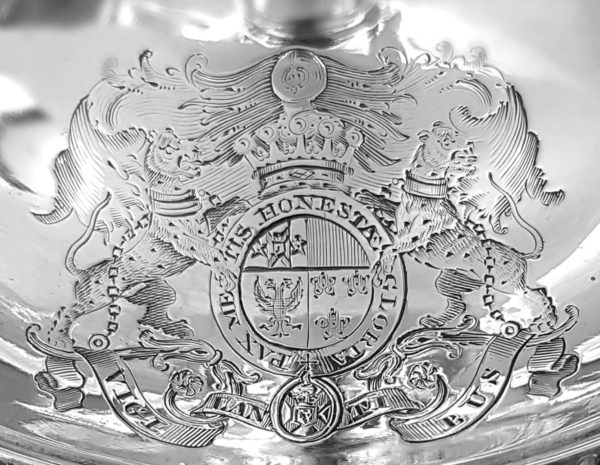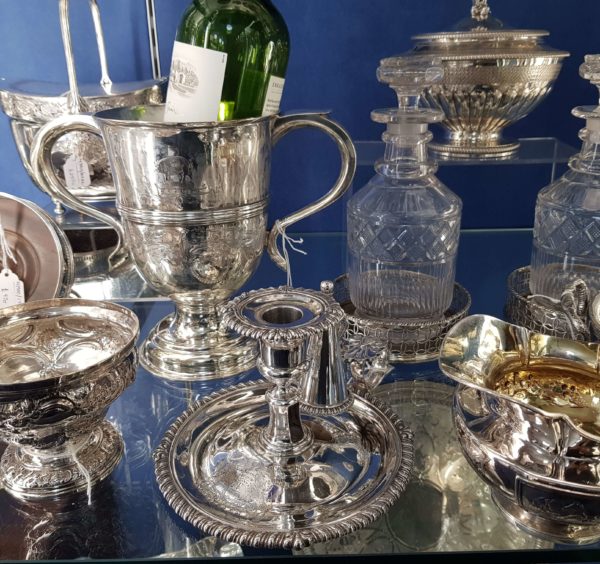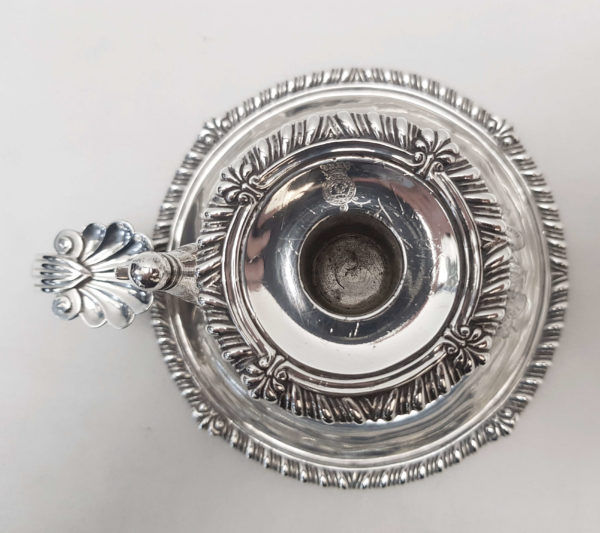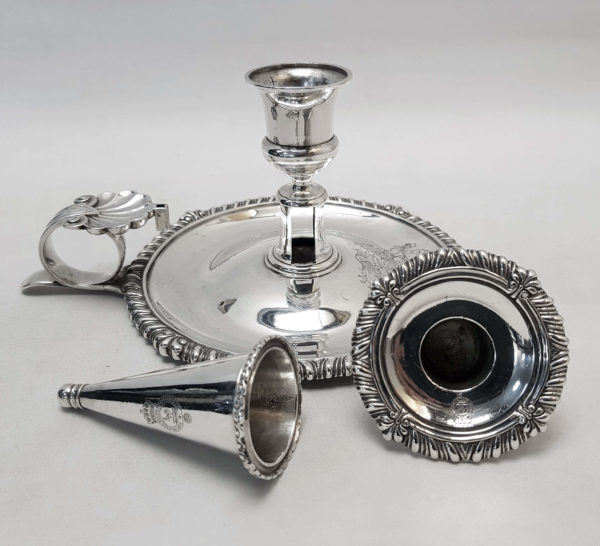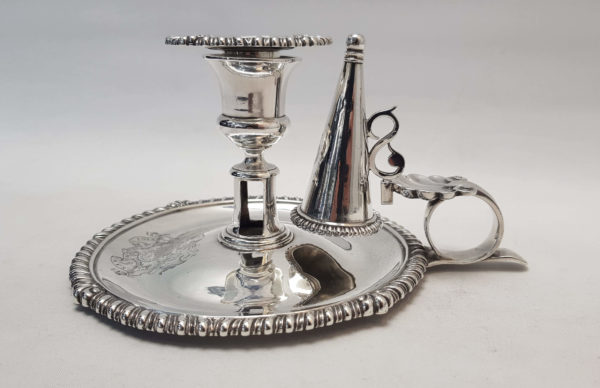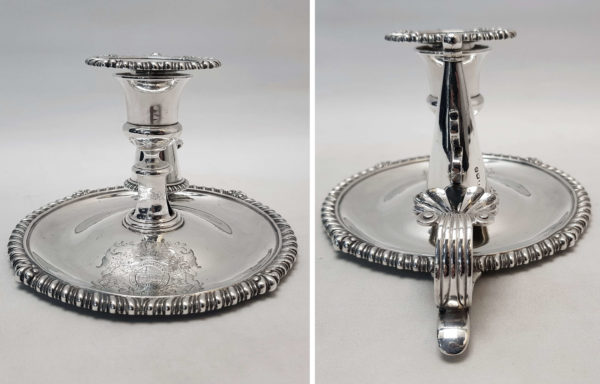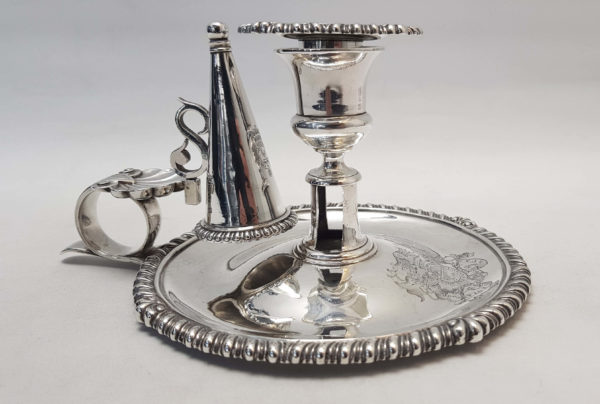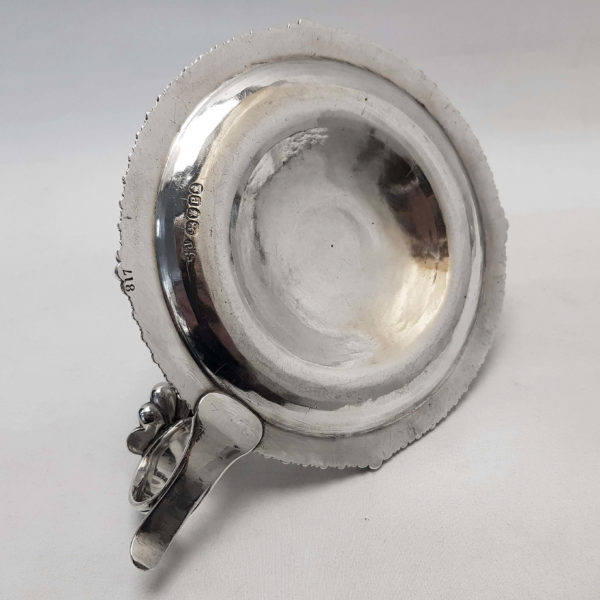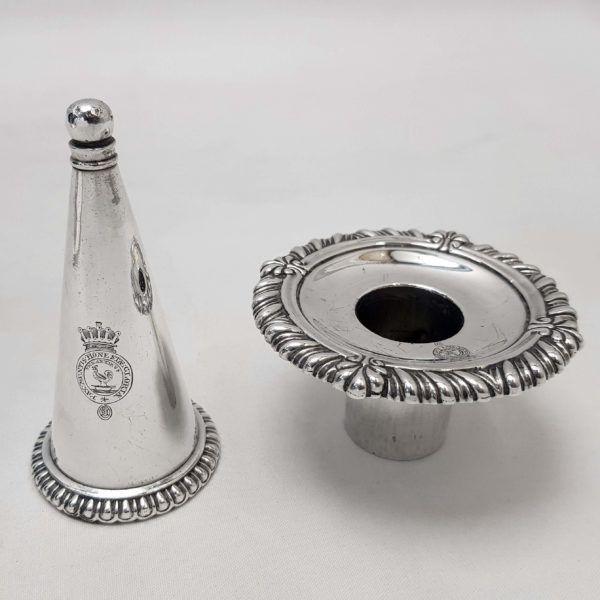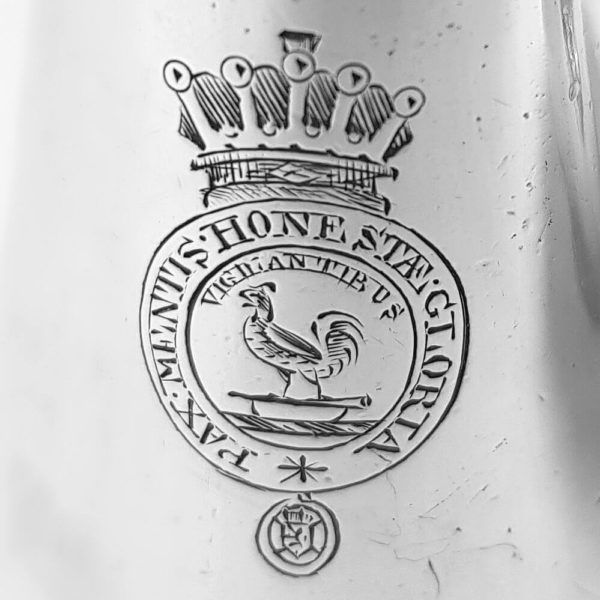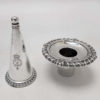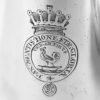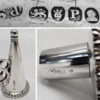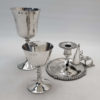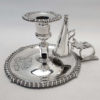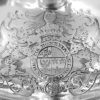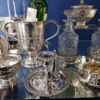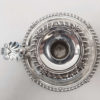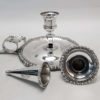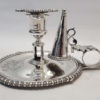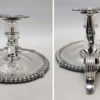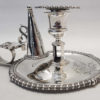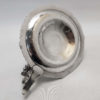George III Antique Silver Chamberstick
SOLD
Stock: 10177
Date: 1810
Maker: Paul Storr
Country: England
A fantastic quality antique silver chamberstick with the excellent styling you’d expect from the world famous English silversmith Paul Storr. ...
Description
Condition
This attractive silver go to bed is in very good condition. All pieces are matching. Sharp engraving. Good colour. Shows moderate signs of wear commensurate with age.
Maker Information
Maker: Paul Storr
Paul Storr (28 October 1770 – 18 March 1844 ), was one of the most talented silversmiths of the late Georgian period. Today his legacy of exceptionally well crafted silver can be found worldwide in museums and private collections. Son of Thomas Storr, a silver chaser, apprenticed 1785 to Andrew Fogelberg. First mark, as plateworker, in partnership with William Frisbee 1792. Second mark alone 1793. 3rd mark 1793. 4th mark 1794. 5th mark 1799. Subsequent 6th - 12th marks entered 1807-1834. By the beginning of the nineteenth century, established as one of London’s top silversmiths, he was producing commissions for Royalty. In 1801 he married Elizabeth Susanna Beyer with whom he was to have ten children. In 1807 Paul Storr entered into a working relationship with Philip Rundell and by 1811 was a partner, and managing the workshops for Rundell, Bridge & Rundell. During this period he kept his own marks and separate workshop, however Rundell, Bridge & Rundell were appointed Goldsmith in Ordinary to George III in 1804, and through them his reputation as a master silversmith grew. His talents lay in being able to transform ideas and designs from Rundell, Bridge & Rundell’s designers, William Theed II and later John Flaxman II. Rundell, Bridge & Rundell’s reputation grew due to the subsequent patronage of the Prince Regent (later George IV). Storr left RUNDELL, BRIDGE & RUNDELL in 1819 and went into partnership with John Mortimer, the assistant of a retiring retail goldsmith and jeweller, WILLIAM GRAY, of 13 New Bond Street. The firm was renamed STORR & MORTIMER and Storr concentrated on the manufacture of goods for Mortimer to sell in the shop at 13 New Bond Street. Storr and Mortimer, now manufacturing and retail goldsmiths, jewellers and silversmiths with an influential clientele, moved to 156, New Bond Street, in 1838. Storr retired to Tooting in 1839 and died in 1844.
Our Guarantee
Customer satisfaction is our primary concern
All silverware on our website is checked thoroughly prior to offering it for sale and every product listing contains a condition report and details of the silver hallmarks.
All items offered on our website include:
- Free Shipping Worldwide
- Tracked and Insured
- 14 day no quibble money back guarantee
- We are accredited members of LAPADA and conform to their strict professional standards
- We dispatch 1-3 days after receiving cleared payments
More detailed information about deliveries, returns and how to pay is available in the Help section at the bottom of this page.
